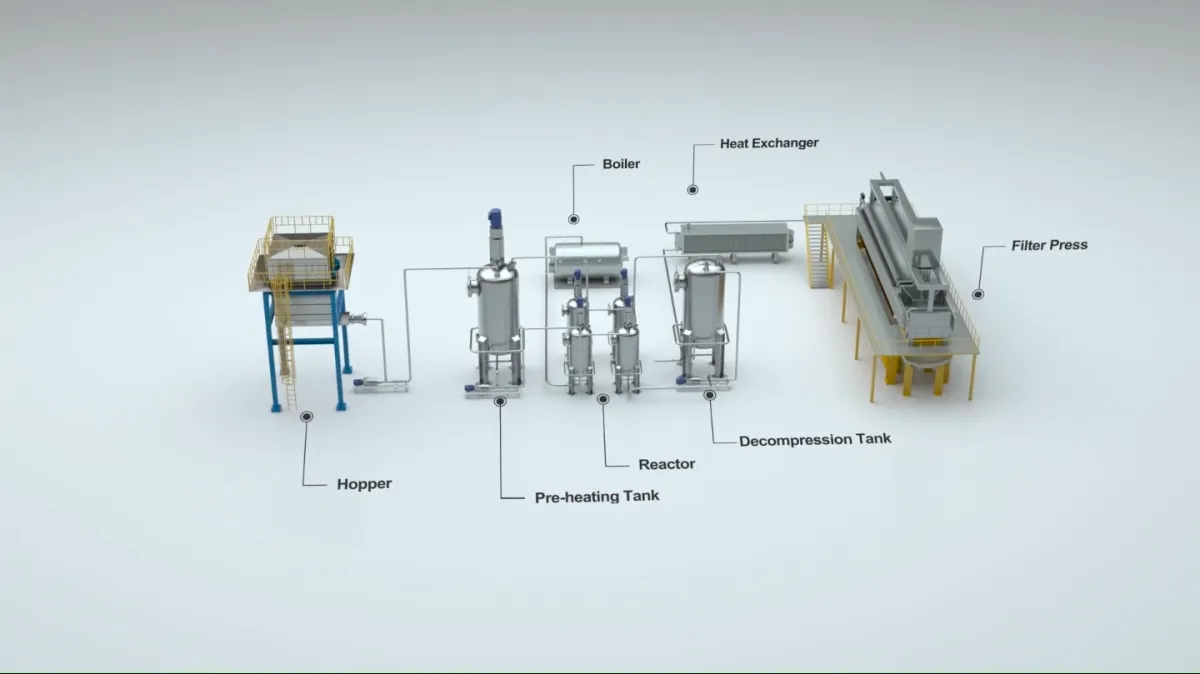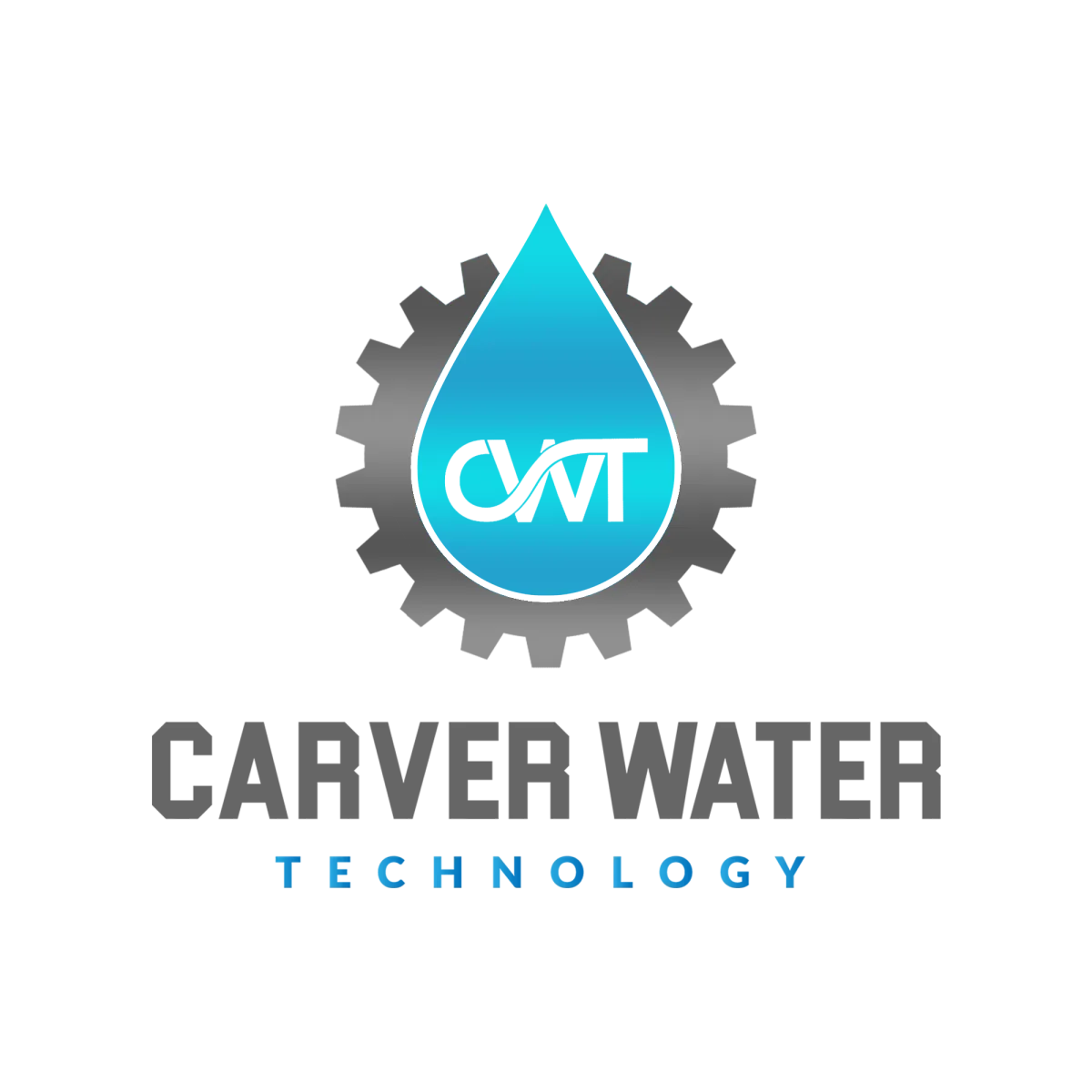
DRACO Thermal Hydrolysis: Boosting Biogas Production 30%+ While Reducing Digestate Volumes for Energy Recovery Facilities
The Energy Recovery Challenge: Maximizing Biogas While Minimizing Waste
Energy recovery facilities across the Southeast face dual pressures that are squeezing operational margins and limiting growth potential. Rising disposal costs for digestate and biosolids are eating into revenue, while energy markets demand maximum biogas production to remain competitive. Traditional anaerobic digestion systems, operating at standard parameters, leave significant energy potential untapped while generating substantial volumes of material requiring costly disposal.
Wastewater treatment plants from Florida to North Carolina process millions of gallons daily, generating biosolids that represent both a disposal challenge and an underutilized energy resource. Current anaerobic digestion systems typically achieve 40-50% volatile solids destruction, leaving substantial organic matter in digestate that could be converted to valuable biogas. Meanwhile, digestate volumes often exceed facility handling capacity, requiring expensive off-site disposal or land application programs.
Schedule a free biogas optimization assessment for your energy recovery operation.
The economic impact is substantial. A typical 10 MGD wastewater treatment plant generates 40-60 wet tons of biosolids daily. At disposal costs of $65-85/wet ton, annual disposal expenses reach $950,000-1,850,000. Simultaneously, suboptimal biogas production means lost revenue of $100,000-300,000 annually in potential energy generation. These facilities need technology that addresses both challenges simultaneously - increasing energy recovery while dramatically reducing waste volumes.
DRACO Technology: Dual-Mode Solutions for Energy Optimization
Tomorrow Water's DRACO (Destructive Reduction and Carbonization) technology offers two distinct configurations specifically designed for energy recovery applications: Thermal Hydrolysis Process (THP) for biogas enhancement and HydroThermal Carbonization (HTC) for volume reduction. Both processes can be integrated into existing facilities to optimize energy recovery and reduce operational costs.
DRACO THP: Pre-Digestion Biogas Enhancement
Operating Parameters for Maximum Biogas Production:
Temperature: <170°C optimized for cellular breakdown
Pressure: ~7 bar for controlled hydrolysis
Reaction time: 20 minutes for optimal organic matter release
Input flexibility: Processes thickened sludge at 16-18% dry solids
Integration: Pre-treatment before anaerobic digestion
Proven Performance Results:
Biogas increase: >30% methane production improvement documented
Digester efficiency: Doubles loading rates while reducing HRT
Volatile solids destruction: Enhanced breakdown from 45% to 65%+
Digester capacity: Existing digesters handle 2x throughput
The science behind these improvements lies in DRACO THP's ability to rupture cell walls and break down complex organic polymers that are typically resistant to anaerobic digestion. This pre-treatment makes organic matter more bioavailable to methanogenic bacteria, accelerating the conversion process and increasing overall biogas yields.
Get detailed biogas production projections for your specific organic waste streams.
DRACO HTC: Post-Digestion Volume Reduction
Operating Parameters for Maximum Volume Reduction:
Temperature: >190°C for optimal carbonization
Pressure: ~12 bar for complete transformation
Reaction time: 30 minutes for thorough processing
Application: Post-digestion digestate processing
Output: 75%+ volume reduction achieved
Volume Reduction Performance:
Digestate processing: Handles post-AD material at 15-25% dry solids
Final dewatering: Achieves 50-66% dry solids cake
Volume reduction: 75-85% reduction in material requiring disposal
Quality improvement: Pathogen-free Class A biosolids for beneficial use
This configuration addresses the backend challenge of digestate management while producing a valuable fertilizer product that can generate additional revenue or eliminate disposal costs entirely.
Southeastern Energy Recovery Market Applications
Wastewater Treatment Plant Optimization
The Southeast's growing population and industrial development are driving increased wastewater generation and more stringent environmental regulations. Energy recovery from biosolids represents both a compliance strategy and a revenue opportunity for municipal utilities.
Current Regional Challenges:
Energy costs: Rising electricity and natural gas prices affecting operational budgets
Disposal restrictions: Tightening regulations on biosolids land application
Capacity constraints: Growing populations exceeding digester capacity
Revenue pressure: Need for cost-neutral or revenue-positive operations
Environmental goals: Municipal commitments to carbon neutrality and renewable energy
DRACO THP Benefits for WWTPs:
Energy independence: 30%+ biogas increase moves facilities toward energy neutrality
Capacity expansion: Double existing digester throughput without new construction
Disposal cost reduction: Enhanced digestion reduces volatile solids requiring disposal
Revenue generation: Excess biogas for sale or renewable natural gas production
Regulatory compliance: Class A biosolids production for expanded beneficial use options
Economic Impact Analysis: A 10 MGD wastewater treatment plant with existing anaerobic digestion:
Current biogas: ~15,000 ft³/day at 60% methane content
DRACO THP enhancement: ~20,000 ft³/day biogas production
Additional energy: 1,200 kWh/day additional electricity generation
Annual value: $130,000-180,000 in additional energy revenue
Calculate energy recovery potential for your wastewater treatment facility.
Industrial and Agricultural Energy Recovery
Food processing facilities, agricultural operations, and industrial manufacturers generate substantial organic waste streams that represent untapped energy resources. DRACO technology enhances the economics of anaerobic digestion for these applications while solving waste management challenges.
Food Processing Applications:
Brewery waste: Enhanced biogas from spent grains and yeast
Dairy processing: Increased methane from whey and dairy solids
Meat processing: Improved digestion of high-protein waste streams
Produce processing: Better breakdown of fibrous vegetable waste
Agricultural Integration:
Livestock operations: Enhanced biogas from manure and bedding materials
Crop residue processing: Better utilization of agricultural waste
Energy crop optimization: Improved economics for dedicated energy crops
Co-digestion benefits: Enhanced performance from mixed waste streams
Industrial Waste Streams:
Paper mills: Enhanced biogas from fiber and biological sludges
Chemical processing: Better treatment of high-strength organic waste
Pharmaceutical manufacturing: Improved processing of biological waste
Textile operations: Enhanced treatment of organic dyes and fibers
Landfill and Waste Management Operations
Landfill operators and waste management companies face increasing pressure to capture methane emissions while managing organic waste volumes. DRACO technology offers solutions for both existing landfill gas enhancement and alternative organic waste processing.
Landfill Gas Enhancement:
Pre-processing: Treatment of organic waste before landfill placement
Gas capture optimization: Enhanced methane generation from treated organics
Leachate reduction: Lower moisture content reduces leachate generation
Airspace conservation: Volume reduction extends landfill life
Alternative Processing:
Diversion programs: Process organic waste before landfill disposal
Energy recovery facilities: Dedicated biogas production from municipal organics
Composting enhancement: Improved decomposition and reduced odors
Transportation optimization: Volume reduction reduces collection costs
Explore waste-to-energy opportunities for your waste management operation.
Technical Advantages: Proven Performance Data
Laboratory and Pilot Scale Validation
DRACO technology has undergone extensive testing and validation through pilot plant operations processing 2 wet tons/day of various organic waste streams. This comprehensive testing program provides reliable performance data for full-scale implementation planning.
Post-AD HTC Performance Data:
Continuous operation: 27-day hydraulic retention time vs. 30 days conventional
Methane production: 2.0 L/d vs. 1.5 L/d for conventional digestion alone
Volume reduction: >75% reduction in digestate volume
Process stability: Consistent performance across varying feedstock conditions
Feedstock Flexibility Testing:
Municipal biosolids: Primary, WAS, and digested sludge processing
Industrial waste: Food processing and manufacturing organic streams
Agricultural waste: Livestock manure and crop residue processing
Co-digestion streams: Mixed organic waste optimization
Full-Scale Commercial Installations
Daejeon WWTP, Korea (Under Construction):
Capacity: 495 wet tons/day DRACO THP installation
Application: Pre-AD biogas enhancement for municipal WAS
Design parameters: 25-day anaerobic digestion HRT
Expected results: 30%+ biogas increase with enhanced volatile solids destruction
Gimhae Facility, Korea (Operating Since 2019):
Capacity: 100 wet tons/day DRACO HTC operation
Application: Volume reduction without anaerobic digestion
Results: 80%+ volume reduction for mixed municipal and industrial waste
Benefits: Elimination of disposal costs and production of Class A biosolids
Seosan Project, Korea (Commissioning 2025):
Capacity: 100 wet tons/day for drying performance improvement
Integration: DRACO HTC with thermal drying for solid fuel production
Innovation: Combined volume reduction and energy recovery approach
Performance: 87% overall volume reduction with energy co-production
Access detailed case study performance data for technology validation.
Energy Recovery Economics: ROI Through Enhanced Production
Biogas Revenue Enhancement
Direct Energy Value Calculation: For a facility producing 15,000 ft³/day of biogas at current rates:
Current energy value: ~9,000 kWh/day at $0.12/kWh = $1,080/day
DRACO THP enhancement: +30% = 12,000 kWh/day total
Additional revenue: $360/day or $131,000/year additional energy value
Investment payback: 2-4 years typical for THP installations
Renewable Natural Gas Opportunities: Enhanced biogas production creates opportunities for renewable natural gas (RNG) development:
Pipeline injection: Upgraded biogas for natural gas grid injection
Vehicle fuel: Compressed RNG for fleet applications
Premium pricing: RNG commands $15-25/MMBtu vs. $4-6/MMBtu for conventional natural gas
Carbon credits: Additional revenue from greenhouse gas emission reductions
Energy Independence Benefits:
Grid independence: Reduced purchased electricity costs
Price stability: Protection from volatile energy market prices
Backup power: Enhanced energy security during grid outages
Peak shaving: Reduced demand charges through on-site generation
Calculate renewable energy revenue potential for your facility's biogas production.
Disposal Cost Elimination
Volume Reduction Economics: DRACO HTC processing dramatically reduces disposal costs through volume reduction:
Current disposal: 50 wet tons/day at $75/ton = $3,750/day
Post-DRACO: 10 wet tons/day at $75/ton = $750/day
Daily savings: $3,000/day or $1.1 million/year
Investment justification: Disposal savings alone justify DRACO installation
Transportation Cost Reduction:
Current transportation: 2-3 truck loads daily for digestate hauling
Post-processing: Single truck load every 2-3 days
Fuel savings: $200-300/day in reduced transportation costs
Labor efficiency: Reduced handling and logistics management
Land Application Benefits:
Class A biosolids: Expanded beneficial use opportunities
Reduced application rates: Higher solids content requires less material handling
Extended storage: Pathogen-free material allows longer storage periods
Premium pricing: Class A material commands higher value than Class B
Operational Efficiency Gains
Digester Optimization:
Capacity increase: 2x throughput from existing digester infrastructure
Reduced foaming: THP treatment reduces digester foaming issues
Improved mixing: Better material characteristics improve digester performance
Extended equipment life: Reduced stress on existing equipment
Maintenance Reduction:
Reduced viscosity: Lower pumping energy and reduced equipment wear
Pathogen elimination: Reduced biological fouling and corrosion
Improved dewatering: Less polymer consumption and improved cake quality
Process stability: More consistent operations with reduced variability
Implementation Strategies: Technology Integration Options
Retrofit Applications
Pre-AD THP Integration: Most existing anaerobic digestion facilities can be retrofitted with DRACO THP technology:
Upstream integration: Install before existing digesters
Minimal disruption: Phased installation during planned maintenance
Utility integration: Steam generation from existing boiler systems
Control system: Integration with existing SCADA and control systems
Post-AD HTC Integration: For facilities prioritizing volume reduction:
Downstream processing: Install after existing digestion
Independent operation: Can operate separately from digestion systems
Flexible scheduling: Process digestate as generated or in batches
Product handling: Integration with existing dewatering equipment
New Facility Design
Integrated System Design: New energy recovery facilities can optimize DRACO integration:
Combined heat and power: Biogas utilization for steam generation
Heat recovery: Process heat integration for maximum efficiency
Automated operation: Full automation from feedstock to final product
Modular expansion: Design for future capacity increases
Utility Optimization:
Steam generation: Sizing boiler systems for DRACO requirements
Electrical integration: Power requirements and grid connection
Water systems: Process water and cooling requirements
Waste heat recovery: Maximum energy efficiency through heat integration
Get system integration consultation for retrofit or new facility design.
Phased Implementation
Stage 1: Assessment and Design
Feedstock characterization: Testing of specific organic waste streams
Performance modeling: Projected biogas increases and volume reductions
Economic analysis: ROI calculations and financing options
Regulatory planning: Permitting requirements and approvals
Stage 2: Pilot Testing (when required)
Small-scale validation: Proof of concept using actual facility waste
Performance verification: Confirm projected results before full-scale investment
Optimization studies: Fine-tune operating parameters for maximum efficiency
Operator training: Hands-on experience with technology
Stage 3: Full-Scale Implementation
Equipment installation: Professional installation and commissioning
System integration: Connection with existing facility systems
Performance testing: Validation of guaranteed performance parameters
Ongoing optimization: Continuous improvement and support
Environmental and Regulatory Benefits
Greenhouse Gas Reduction
Methane Capture Enhancement:
Increased biogas recovery: 30%+ improvement in methane capture from organic waste
Reduced fugitive emissions: Better digestion reduces methane release
Carbon credit potential: Greenhouse gas reduction credits available
Corporate sustainability: Support for carbon neutrality commitments
Lifecycle Environmental Benefits:
Fossil fuel displacement: Biogas replaces natural gas and electricity from fossil sources
Transportation reduction: Volume reduction reduces truck trips and emissions
Land application: Class A biosolids provide carbon sequestration benefits
Circular economy: Waste-to-energy exemplifies circular economy principles
Regulatory Compliance Advantages
EPA Part 503 Compliance:
Class A pathogen elimination: Thermal treatment exceeds pathogen reduction requirements
Vector attraction reduction: Volatile solids destruction meets VAR requirements
Heavy metals compliance: No chemical additions that could introduce contaminants
Land application flexibility: Class A status expands beneficial use options
State and Local Regulations:
Air quality: Reduced emissions from enhanced biogas capture
Water quality: Improved biosolids quality reduces groundwater concerns
Waste management: Volume reduction supports waste diversion goals
Renewable energy: Supports state renewable energy mandates
Get regulatory compliance assessment for your jurisdiction's requirements.
Regional Support and Implementation Services
Comprehensive Project Management
Pre-Implementation Support:
Feasibility studies: Detailed technical and economic analysis
Technology selection: THP vs. HTC configuration optimization
Regulatory support: Permitting assistance and agency coordination
Financing assistance: Capital planning and funding source identification
Installation and Commissioning:
Project management: Dedicated team for seamless implementation
Quality assurance: Certified installation procedures and testing
System integration: Professional integration with existing systems
Performance validation: Guaranteed performance testing and certification
Ongoing Support:
24/7 emergency support: Immediate response for critical operations
Preventive maintenance: Scheduled maintenance programs for optimal performance
Performance optimization: Continuous improvement consulting and support
Technology updates: Access to latest developments and improvements
Southeast Regional Expertise
Local Market Knowledge:
Waste characteristics: Understanding of regional organic waste streams
Regulatory environment: Knowledge of state and federal requirements
Utility relationships: Established connections with regional utilities
Service network: Local contractors and service providers
Industry Experience:
Municipal utilities: Experience with wastewater treatment plant operations
Industrial facilities: Knowledge of food processing and manufacturing waste
Agricultural operations: Understanding of livestock and crop processing waste
Landfill operations: Experience with waste management and gas capture
Connect with regional experts for immediate project support.
Next Steps: Optimize Your Energy Recovery Operation
Assessment and Planning Process
Energy Recovery Audit:
Current performance analysis: Evaluation of existing biogas production and utilization
Waste stream characterization: Analysis of organic waste composition and volumes
Economic baseline: Current energy costs and disposal expenses
Optimization opportunities: Identification of improvement potential
Technology Selection:
THP vs. HTC evaluation: Optimal configuration for your specific application
Integration planning: Seamless connection with existing systems
Performance projections: Guaranteed results based on your waste characteristics
Investment analysis: Detailed ROI calculations and financing options
Implementation Planning:
Project timeline: Phased approach minimizing operational disruption
Regulatory strategy: Permit applications and agency approvals
Construction planning: Site preparation and utility requirements
Training program: Operator certification and ongoing support
Begin your energy optimization assessment today.
Investment and Financing Solutions
Capital Investment Analysis:
Equipment costs: Complete system pricing for your capacity requirements
Installation expenses: Turnkey project costs including integration
Operating expenses: Energy, maintenance, and labor requirements
Revenue enhancement: Biogas value increase and disposal cost savings
Financing Options:
Traditional financing: Equipment loans and leasing programs
Performance contracts: Payment based on energy production and cost savings
Power purchase agreements: Third-party ownership with energy sales
Grant funding: State and federal incentives for renewable energy projects
Risk Management:
Performance guarantees: Contractual commitments for energy production improvements
Technology insurance: Protection against equipment performance issues
Regulatory compliance: Guaranteed permit approval and ongoing compliance support
Market protection: Long-term energy pricing agreements when available
Emergency Response and Rapid Implementation
Critical Situation Support: For facilities experiencing immediate energy production or waste management challenges:
Emergency assessment: Rapid evaluation of critical issues
Temporary solutions: Mobile equipment and process modifications
Expedited installation: Fast-track implementation for urgent needs
Crisis management: Complete support during emergency situations
Rapid Implementation Programs:
Pre-engineered systems: Standard configurations for quick deployment
Expedited permitting: Streamlined regulatory approval processes
Accelerated installation: Compressed timeline implementation
Immediate support: Enhanced support during startup and optimization
Contact emergency response team for urgent energy recovery challenges.
Conclusion: Transforming Waste into Valuable Energy Resources
DRACO thermal hydrolysis technology represents a proven solution for energy recovery facilities seeking to maximize biogas production while minimizing waste management costs. Whether implemented as pre-digestion treatment for enhanced biogas yields or post-digestion processing for dramatic volume reduction, DRACO technology delivers measurable improvements in both energy production and operational efficiency.
Immediate Impact:
30%+ biogas increase: Significant enhancement in energy production and revenue
75%+ volume reduction: Dramatic reduction in disposal costs and logistics
Class A biosolids: High-value fertilizer product with expanded market opportunities
Process optimization: Improved digester performance and operational stability
Long-term Value:
Energy independence: Reduced reliance on purchased electricity and natural gas
Revenue diversification: Multiple income streams from energy and fertilizer products
Environmental leadership: Significant greenhouse gas reductions and sustainability benefits
Operational efficiency: Reduced maintenance, labor, and management requirements
The Southeast's growing focus on renewable energy, combined with increasing pressure to manage organic waste sustainably, creates an ideal environment for DRACO technology adoption. Facilities that implement this proven technology today will benefit from enhanced energy production, reduced operational costs, and improved environmental performance that positions them as leaders in the transition to a circular economy.
Schedule your comprehensive energy recovery assessment to discover how DRACO thermal hydrolysis can transform your waste management challenges into profitable energy opportunities.
Carver Water Technology serves as the authorized regional partner for Tomorrow Water's innovative DRACO thermal hydrolysis technology throughout the Southeastern United States. Our experienced team provides comprehensive support from initial feasibility analysis through full-scale implementation and ongoing optimization, ensuring your energy recovery operation achieves maximum efficiency and profitability while contributing to a sustainable energy future.









